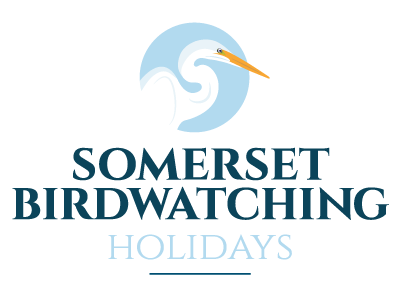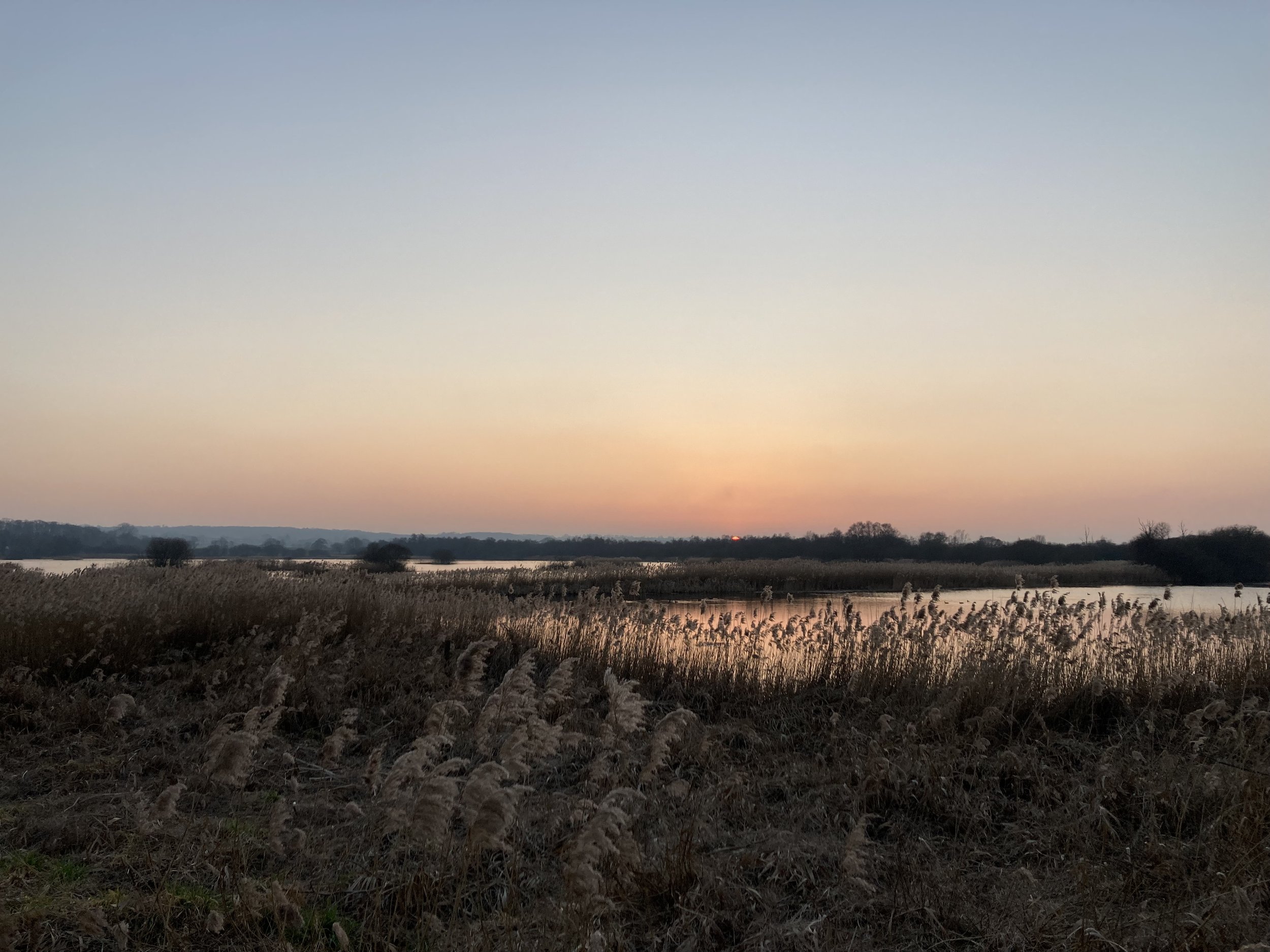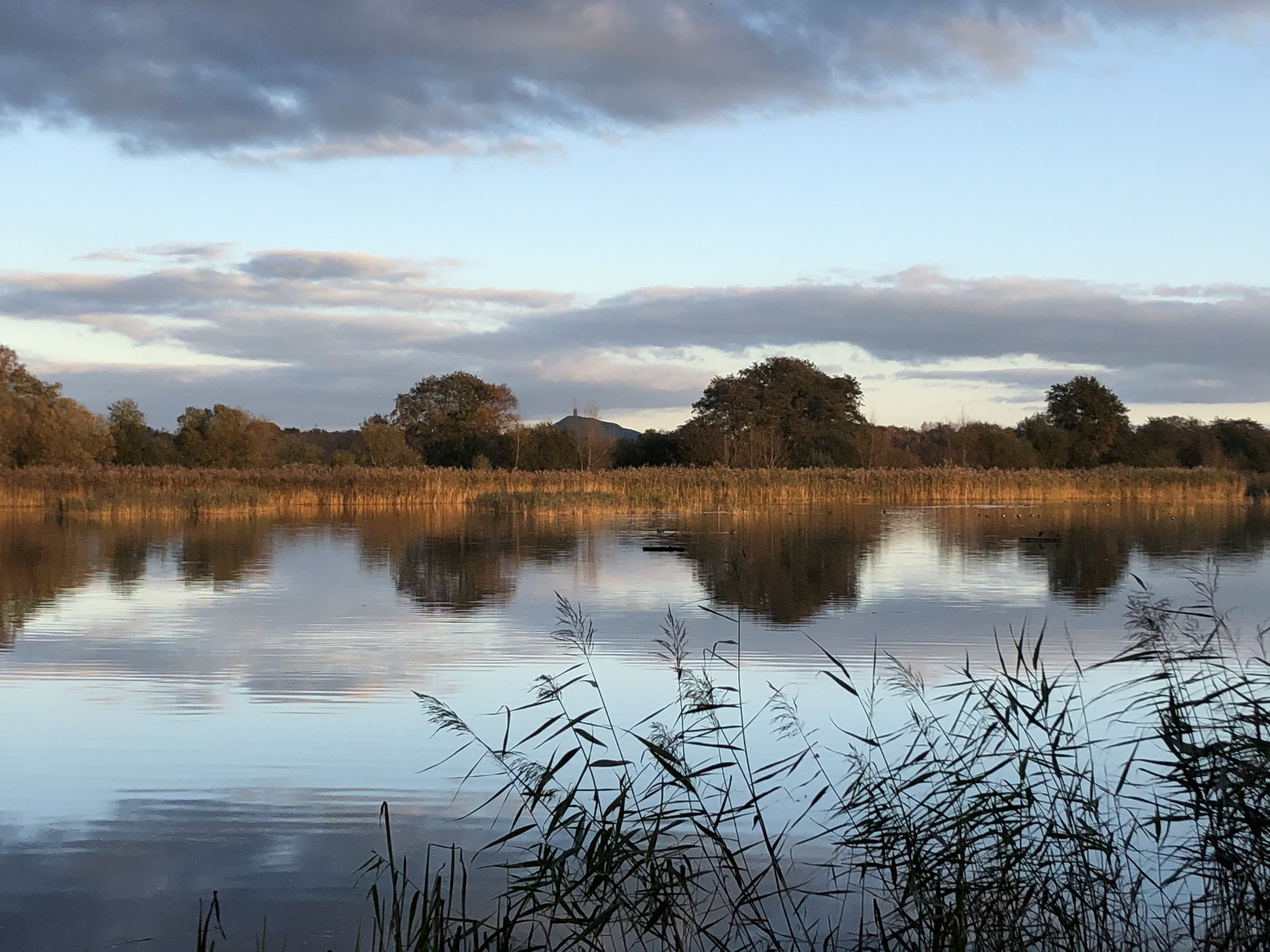Winter birding in Somerset
Wednesday 29th November
Our first tour of the winter started on Tealham Moor, which (like everywhere around here recently) produced lots of Fieldfares, and several pairs of Stonechats, which had been fairly scarce so far this winter. Several Buzzards and four Rooks flew overhead, and we also came across 2 Great White Egrets and a Kestrel.
We arrived at the RSPB’s showpiece reserve at Ham Wall around 3pm, and headed as always down the old railway track towards where we hoped the Starling murmurations would soon appear. Beforehand, from the car park, we had brief flight views of a Glossy Ibis, and a dozen Snipe heading fast overhead. We spotted a few Siskins, though they were very flighty and did not perch for long; on the water were Little and Great Crested Grebes, lots of Coots, Gadwall and other wintering ducks, and a calling Water Rail; also two Marsh Harriers (one female perched) but sadly no Bitterns!
From just before sunset, at ten past four, it all started to kick off: lots of Starlings, of course, but also at least 35 Cattle Egrets and the Glossy Ibis in the distance going to roost. The Starlings performed reasonably well, though mild weather to the east of the UK meant there were not as many as we hoped. On the drive back across Tealham Moor, Graeme had brief views of a hunting Barn Owl and a Woodcock. Later Stephen joined us for convivial drinks and a splendid dinner at Walls Farm.
Waiting for the starlings
Thursday 30th November
Today dawned very cold and windy, though fortunately not wet, as we drove through Bridgwater to the newish Wildfowl and Wetlands Trust reserve at Steart Marshes. As always the car park produced some nice birds: Goldfinches, House Sparrows, Jackdaws, a Meadow Pipit and yet another pair of Stonechats – we love the way these birds overwinter as a couple!
We took the short walk to Quantock Hide, which had the usual collection of wildfowl – mostly Shoveler, Teal, Wigeon and Shelducks – and a few Dunlins, while en route Lapwings, Dunlin and a single Snipe flew overhead. We could also get good views of Golden Plovers, before the flock suddenly rose up and Graeme spotted the reason – a male Peregrine passing overhead. We later saw him perched on the electricity pylon, and had a better view as we enjoyed a welcome hot drink and biscuits back at the car park.
We then drove over to Greylake RSPB, where we enjoyed views of a dark Buzzard perched on a fencepost, as well as lots of Wigeon, Teal and Shoveler, Lapwing and several Common Snipe very close to the hide. Six Cattle Egrets flew past in the distance, as well as a female Marsh Harrier and Little Egret, and a few Long-tailed Tits on our way out.
After our usual excellent lunch at the King Alfred Inn at Burrowbridge, we headed over (past West Sedgemoor) to the RSPB reserve at Swell Wood. Walking down to the viewpoint we heard Nuthatch and Coal Tit; while from the viewpoint itself we saw a pair of adult Cranes we then spotted a second pair with two well grown young (perhaps from the 2021 brood?) concealed behind the tree!
We ended our visit in the wonderful open hide, where we had close views of Coal Tits (including an oddly very dark individual), Robin, Great and Blue Tits and a Treecreeper.
We arrived back at a rather dull Ham Wall at 3.45pm, just in time for the main event: the Starlings began to arrive from about 3.50 onwards (20 minutes before sunset); by soon after 4pm they had mostly landed – sadly they did not perform as well as the night before, perhaps because of the wind. We did see 11 Cattle Egrets and several Marsh Harriers – as we left we had a parting gift of two Great White Egrets drifting low over the reedbed as they came into land. Then back to the warmth of Walls Farm for another splendid dinner from Kay.
RSPB Ham Wall
Friday 1st December
After our final breakfast we headed westwards to the coast, and specifically to Graeme and Stephen’s local patch, which we nickname the ‘three rivers’ – after the Huntspill, Parrett and Brue, all of which meet here before discharging into Bridgwater Bay.
As we drove down the service road there were plenty of Fieldfares and Redwings – a sign of the cold weather that had kept the temperatures around freezing, and brought lots of birds down from the north. We stopped briefly at Sloway Bridge, over the canal-like River Huntspill, where we saw 3 Coots (unusual here), Moorhens, and a Little Egret, plus a calling Water Rail – our first of the year here, so a good start! At Huntspill Sluice itself there were good numbers of waders: lots of Dunlin, a few Knot (including one with a yellow colour-ring on its right foot), and a record flock for here of about 40 Grey Plovers on the muddy ridge below the sluice.
On the River Parrett itself were 2 drake Pintail (first here since January), flocks of Lapwings and Golden Plovers overhead, and about 50 Canada Geese, as well as lots more Fieldfares and Redwings around the copse. As we walked along the sea wall we saw a pair of Stonechats, about 30 Skylarks, several Meadow Pipits, a Linnet and a single, darker and larger Rock Pipit, 2 Merlins (possibly a pair) over the river, lots of Avocets flying upstream, and a Peregrine on Stert Island (flying and perched). There was also a single Cattle Egret seen on our way out.
We then drove east across the flatlands towards Catcott Lows, with plenty more winter thrushes and lots of Mute Swans en route. At Catcott the water was mostly frozen, so apart from a few Teal, more Mute Swans and several hovering Kestrels there wasn’t much to see. We made the snap decision to return to Tadham and Tealham Moors (where we began two days’ earlier) – this proved to be an inspired choice, beginning with 2 Great White Egrets and 3 Little Egrets en route.
For our final stop we pulled over at Jack’s Drove, hoping for raptors: almost immediately we saw another Kestrel, then a Peregrine (followed by a second bird perched nearby), and a hunting ringtail (female or juvenile) Hen Harrier – always a great bird to see, and a splendid end to an excellent trip.
That brought us to a score-draw between our 6 long-legged waterbirds (3 egrets, Grey Heron, Crane and Glossy Ibis) and 6 raptors (Kestrel, Merlin, Peregrine, Marsh and Hen Harriers and Buzzard – but no Sparrowhawk!) and a total of 84 species for the trip as a whole.


